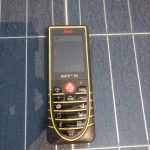Site I.2

Site ID
I.2
Health

COD
2016
Nominal Capacity
100 kWp
Average Specific Yield
1025 kWh/kWp
Total Estimated Loss
10.9%
Possible Gain
14% to 18%
CAPEX, OPEX
1 ₹/Wp, 0.5 ₹/Wp/a
Expenditure / Energy
N/A
Abstract
The PV plant shows high levels of soiling, as well as hotspots and inactive cell strings caused by the impact of near shading and inconsistencies of the inclination and orientation of the modules. The foundation used for the mounting tables is not robust. It is recommended to (i) conduct a reengineering of the modules and strings with individual MPPT assignments, (ii) double the cleaning frequency, (iii) replace the defect modules, (iv) use gravel that increases the reflective properties of the soil, and (v) relocate some shading objects. The estimated production boost caused by the retrofitting actions lies between 14% and 18%.
Main Findings
Heavy soiling detected even though the visit took place 4 days after a heavy rain and hail storm fell in Delhi.
A significant amount of modules with inactive cell strings were found during the infrared inspection.
Near shadings effects are caused by water tanks and metal structures located in the south part of the system
Wind gusts are able to slowly move the structure due to weak concrete foundations not properly attached to the ground.
The tilt angle of the modules is not homogeneous with values varying from 10° to 22°
The installed modules are very hotspot sensitive.
The irradiation sensor is installed “on top” of the PV modules.
Impact on Performance
Heavy Soiling
Soiling measurements were conducted measuring both the short circuit current and nominal power before and after cleaning at irradiations of 600 - 780 W/m2. The estimated soiling loss of the nominal power is in the range of 4%.
Estimated Loss
≈ 4%
Inactive Cell Strings
Modules with inactive cell strings underperform 33% to 66% depending on the amount of affected strings. The extrapolation of the inspected sample to the whole system leads to a loss of 6% on system level.
Estimated Loss
≈ 6%
Near Shading
The near shadings are responsible for an irradiation reduction on the tilted plane of approx. 0.5% at system level.
Estimated Loss
≈ 0.5%
Inhomogeneous tilt angle
The inhomogeneous tilt and azimuthal angle leads to a mismatch loss of approximately 0.4%.
Estimated Loss
≈ 0.4%
Total Estimated Energy Loss
≈ 10.9%
Proposed Solutions
A regrouping of the modules shall be conducted in the following way: modules with similar shading conditions shall be installed in the same string or at least assigned to one MPPT.
Modules with inactive cell strings should be replaced according to the performance warranty terms of the module supplier.
The irradiation sensor should be properly reinstalled to ensure accurate readings.
The modules with the same tilt and azimuth will be grouped in strings with the same MPPT.
A modification of the tilt angle to 24° would lead to a performance boost of 1.7%.
The cleaning cycles shall be increased based on the results of a soiling study that adjusts the cleaning needs to each season.
Objects that cause shading in the south part shall be removed. This exercise is key due to the high hotspot sensitivity of the PV modules.














